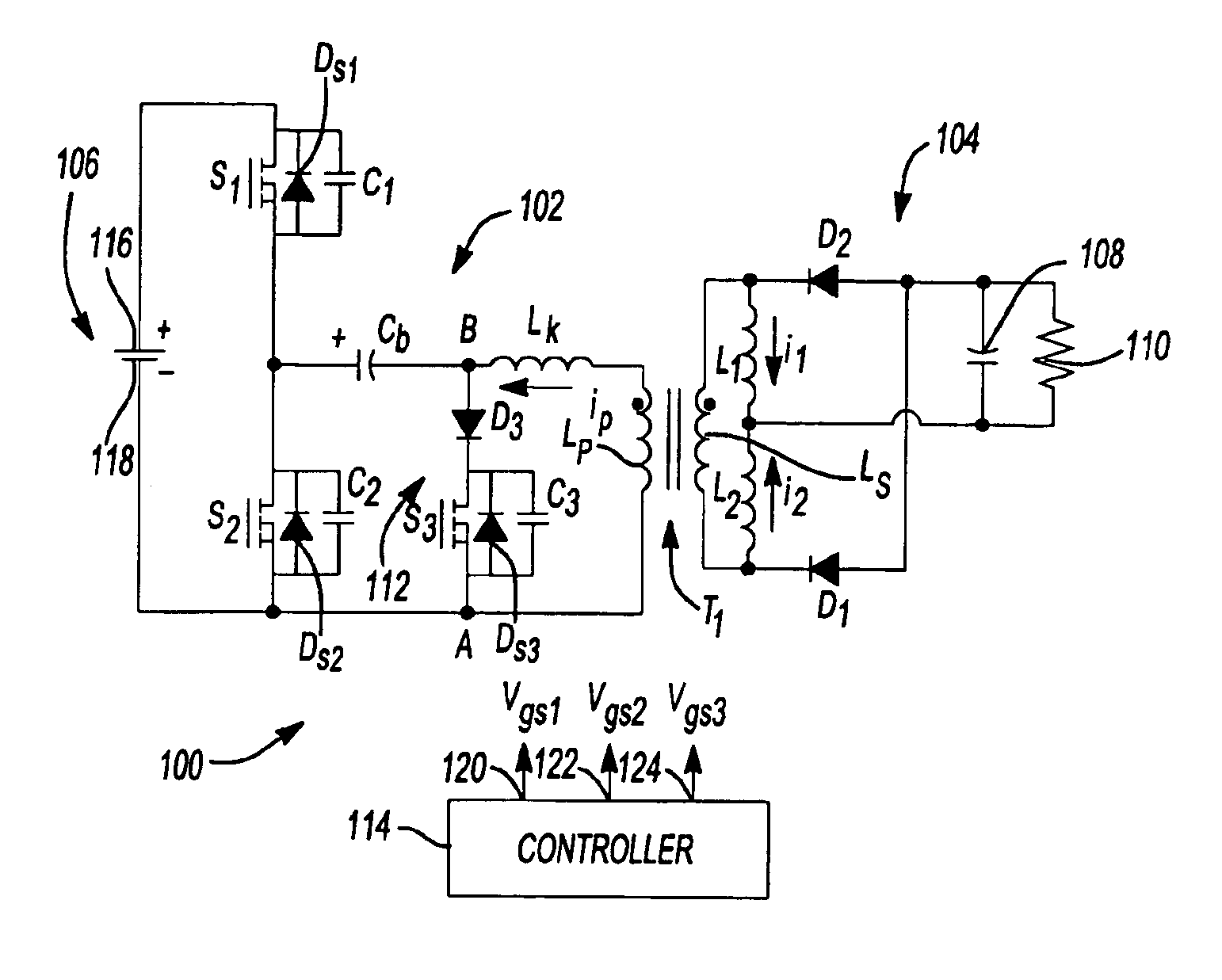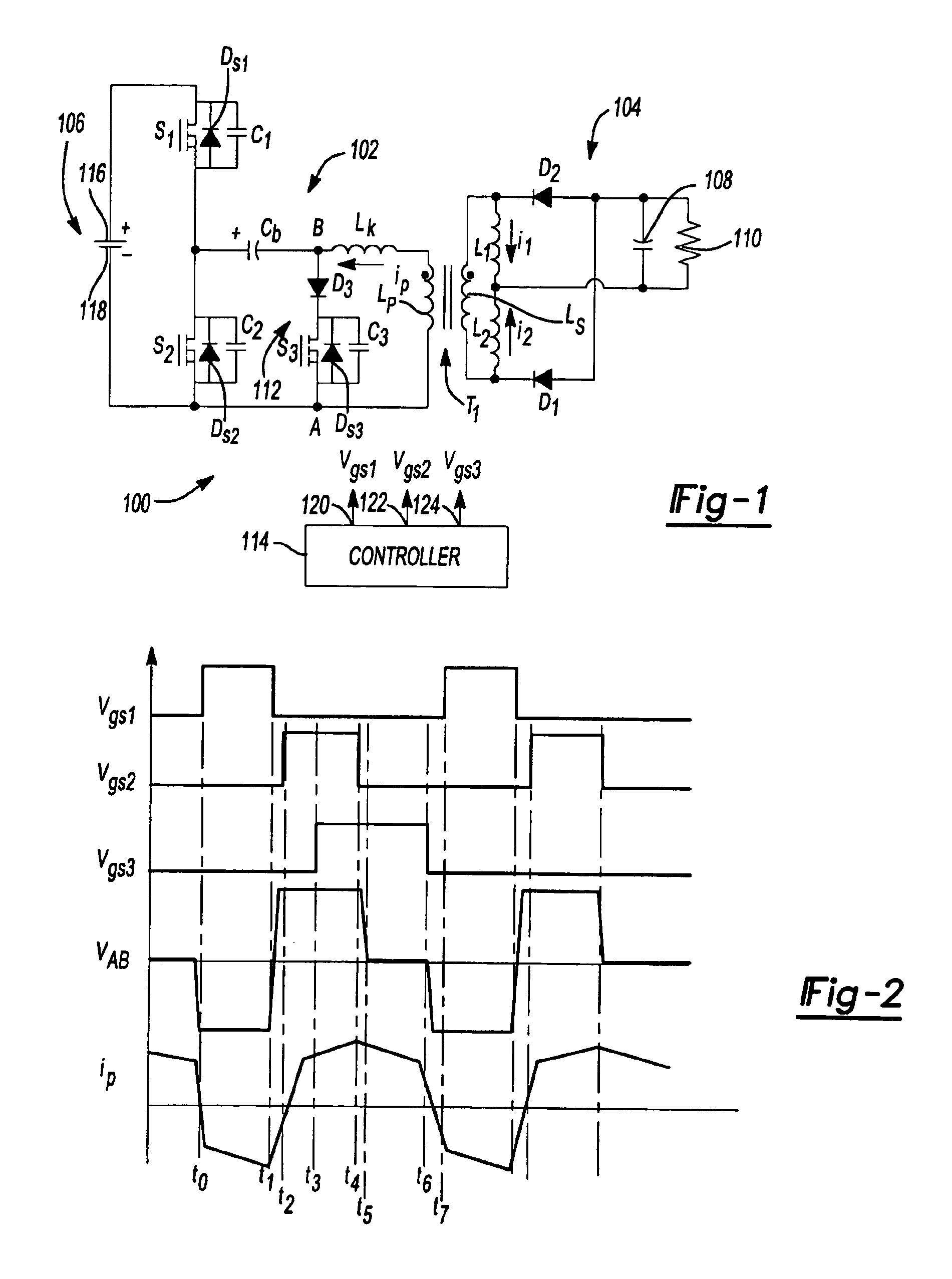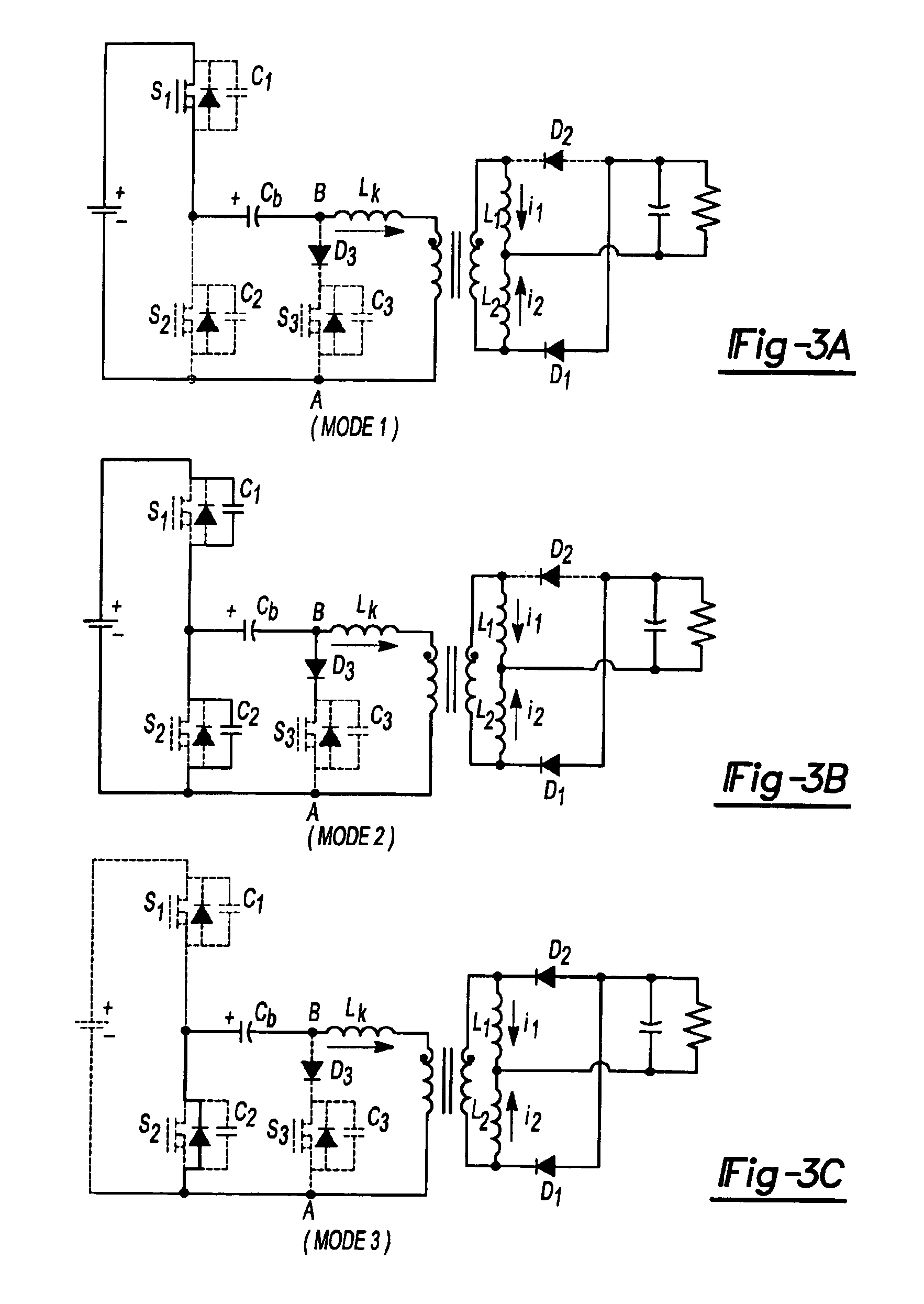Zero-voltage switching half-bridge DC-DC converter topology by utilizing the transformer leakage inductance trapped energy
a transformer and inductance trap technology, applied in the direction of dc-dc conversion, power conversion systems, instruments, etc., can solve the problems of increasing component current stresses, voltage stresses and switching losses, and the complexity of the full bridge is an impediment to its wide application, and achieves energy dissipation and electromagnetic interference (“emi”) emissions
- Summary
- Abstract
- Description
- Claims
- Application Information
AI Technical Summary
Problems solved by technology
Method used
Image
Examples
Embodiment Construction
[0025]The following description of the preferred embodiment(s) is merely exemplary in nature and is in no way intended to limit the invention, its application, or uses.
[0026]FIG. 1 shows a circuit topology for a DCS half-bridge ZVS DC—DC converter 100 in accordance with an aspect of the invention. Half-bridge DC—DC converter 100 includes a primary side 102 and a secondary side 104. Primary side 102 includes primary or power switches S1, S2, capacitor Cb and primary windings Lp of a transformer T1. Secondary side 104 of half-bridge DC—DC converter 100 includes secondary windings Ls of transformer T1, first and second inductors L1, L2, diodes D1, D2, filter capacitor 108 and output 110. Half-bridge DC—DC converter 100 also includes an auxiliary branch 112 in primary side 102. Auxiliary branch 112 includes auxiliary switch S3 and diode D3. Half-bridge DC—DC converter 100 also includes a controller 114 having outputs 120, 122, 124 coupled to switches S1, S2, S3. Controller 114 generates...
PUM
 Login to View More
Login to View More Abstract
Description
Claims
Application Information
 Login to View More
Login to View More - R&D
- Intellectual Property
- Life Sciences
- Materials
- Tech Scout
- Unparalleled Data Quality
- Higher Quality Content
- 60% Fewer Hallucinations
Browse by: Latest US Patents, China's latest patents, Technical Efficacy Thesaurus, Application Domain, Technology Topic, Popular Technical Reports.
© 2025 PatSnap. All rights reserved.Legal|Privacy policy|Modern Slavery Act Transparency Statement|Sitemap|About US| Contact US: help@patsnap.com



